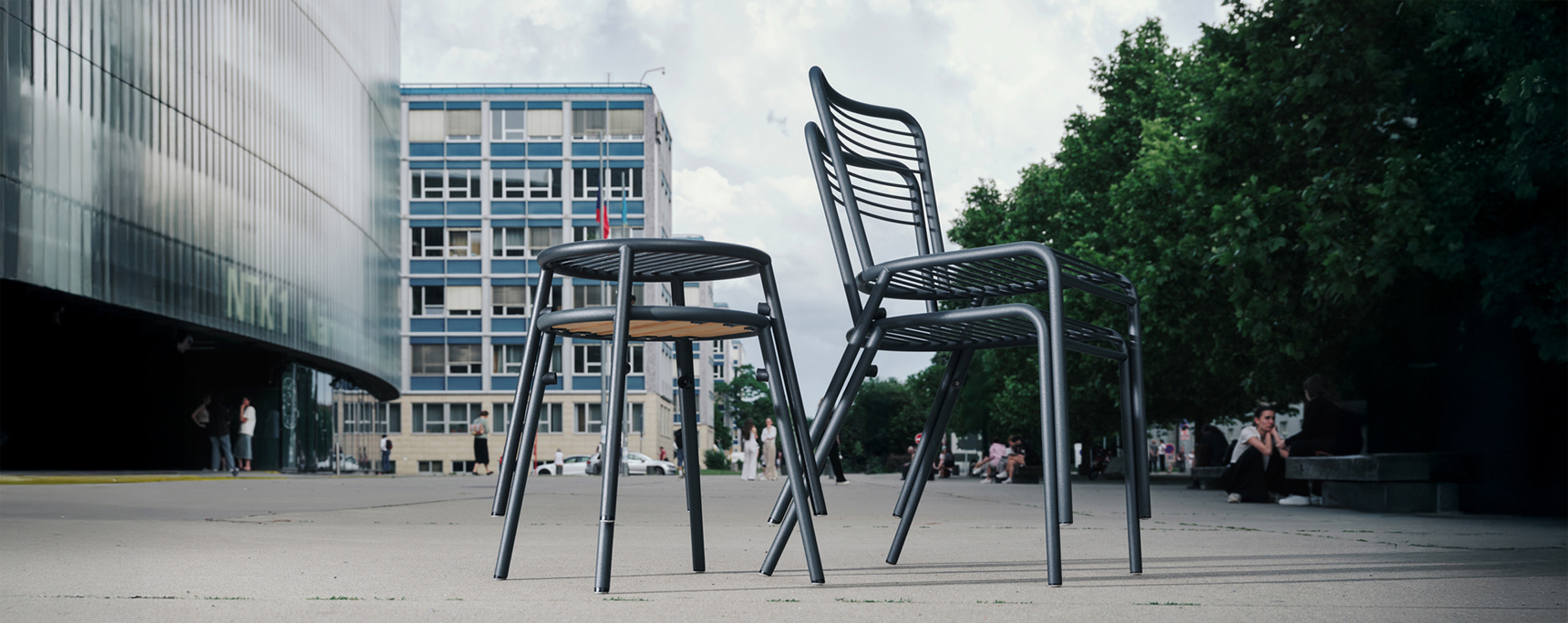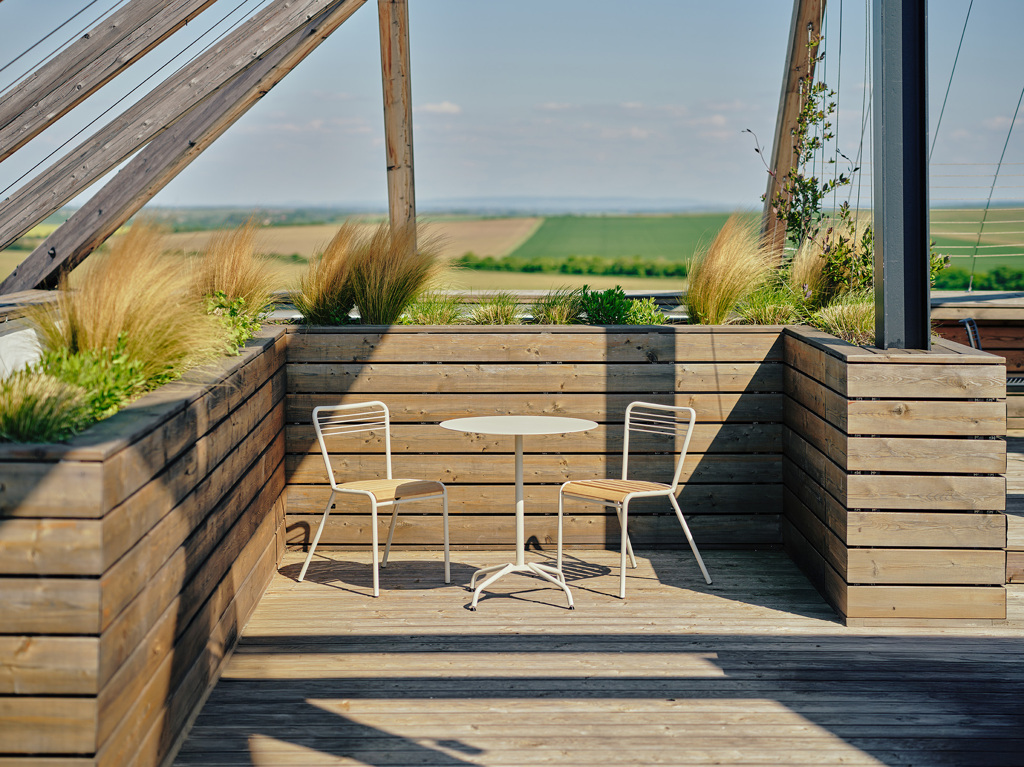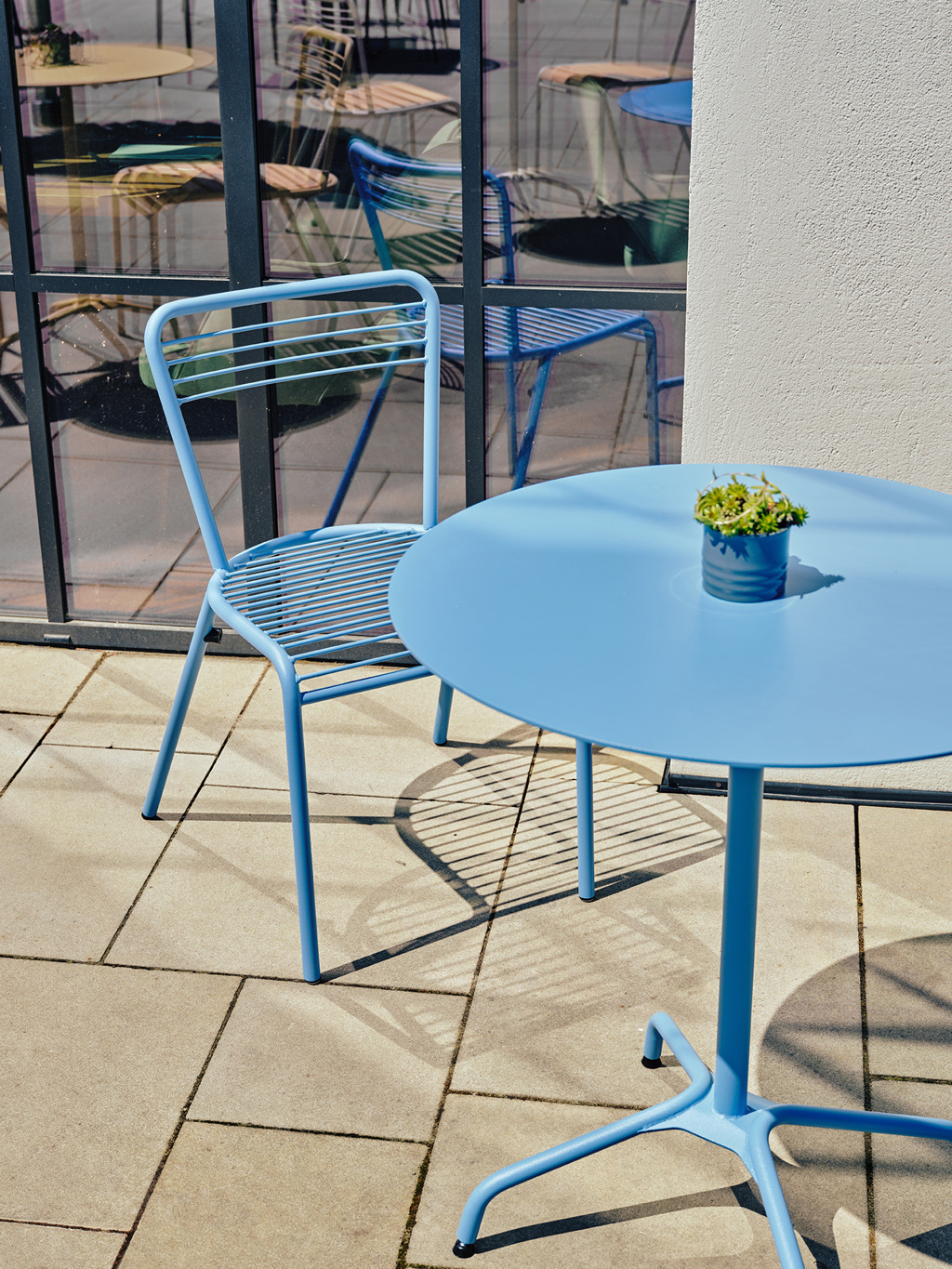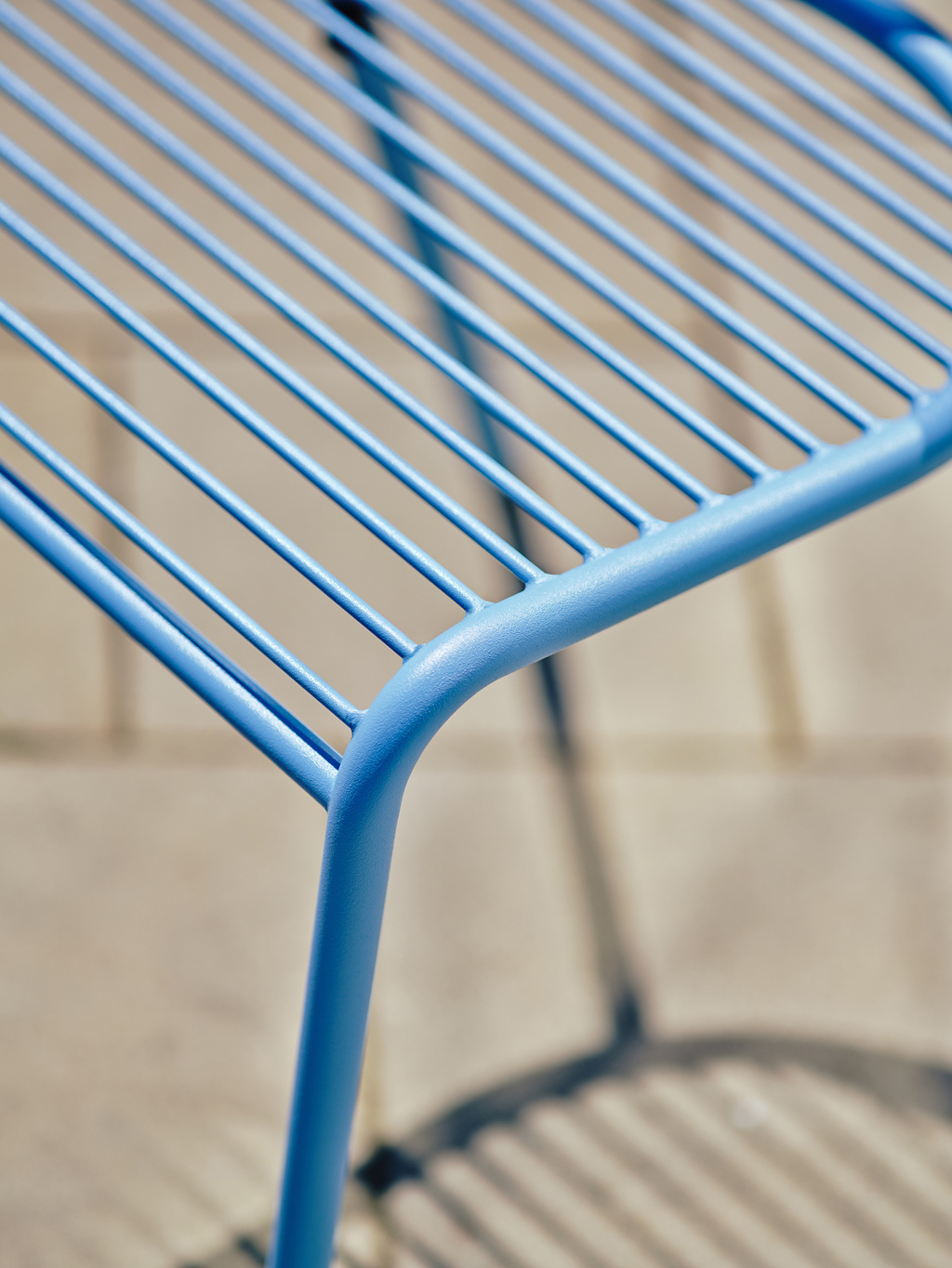We spoke with Jitka Trčková, a member of the mmcité design team since 2013. She has been instrumental in developing several key collections, including the latest, Flaneur – a comprehensive, unanchored furniture collection designed for public spaces. She shared insights into the creation of this collection and the collaborative process within the design team.
Where did the idea for creating an extensive unanchored furniture collection for public spaces originate?
The desire to develop a new urban chair had been growing for several years. A few months ago, a specific project accelerated this initiative, prompting us to offer a fresh, cohesive collection. Consequently, its design became our top priority.
Public spaces have been evolving over time. They are becoming more relaxed, intimate, and safer, encouraging us to spend more leisure time there. Does the Flaneur collection's design reflect these changes?
Absolutely. Flaneur is a collection of unanchored urban furniture that can be easily moved as needed. The chair weighs six kilograms, and the stool four, making them light and easily maneuverable for visitors to cafes or parks. At the same time, they are stable and durable enough to withstand wind and prevent tipping. The collection is designed to be timeless, avoiding fleeting trends, which contributes to its longevity.
What has been your experience with unanchored furniture in parks and squares?
We have long aimed to transform public spaces. We believe that when people are surrounded by high-quality, aesthetically pleasing products – including furniture that evokes positive emotions – they are less inclined to vandalize them. Such products can gradually change public attitudes toward the environment and help reduce vandalism.
What items are included in the collection?
The collection began with an all-metal stackable chair. We then added a stool and a bar chair – each available with wooden seats. Naturally, tables complement the chairs. After extensive testing, we settled on round and oval versions, each offering distinct advantages.
The collection is primarily designed for streets. Can it also be used in bar gardens or cafes? What are its potential applications?
While primarily intended for vibrant city streets that are dynamic and change character throughout the day and night, the collection is ideal for outdoor cafe gardens due to its low maintenance and stackability. Flaneur is also suitable for parks and semi-private or private spaces. The bar chair, for instance, pairs well with Cuby Study, offering elevated seating conducive to comfortable studying. It can thus be utilized in universities, corporate terraces, and is an excellent companion during lunch breaks.
What are its main advantages?
Key benefits include its lightness, stability, and stackability. These features are particularly valuable in multifunctional environments where situations change daily – such as bar gardens or park amphitheaters. Additionally, the collection's range of seating options meets diverse requirements for public gatherings.
The durable construction allows for any color from the RAL palette. Which colors do you think suit the collection best?
Initially, I gravitated toward vibrant pastel colors during the design process and grew fond of this playful style. However, as more orders came in subdued, earthy tones, I realized these also complement the collection beautifully – especially when combined with wood.
In addition to the basic steel structure and round tubing, the collection incorporates wood. What types of wood can customers choose, and when would you recommend this combination?
Each location has its unique characteristics, and it's best to approach them individually. Sometimes, the goal is for the furniture to blend in and highlight architectural landmarks. Other times, it's about enhancing the atmosphere – perhaps through specific metal colors or materials. I envision the wooden version in settings where longer seating is expected – typically in bar gardens. This collection uses acacia wood, jatoba, and thermowood.
How long have you been part of the mmcité design team, and which collections have you contributed to?
I've been with mmcité since 2013, albeit not continuously. Over the years, I've experienced various personal and professional phases but always returned to mmcité. My portfolio includes numerous redesigns of existing products and expansions of waste bins, shelters, and benches. I'm particularly proud of the Gomez bike stand, which features a unique rubber profile and concealed anchoring using an aluminum alloy bracket.
The mmcité design team comprises four designers working under David Karásek's leadership. How does this collaboration function?
Our team is diverse, with each member bringing a unique approach to design. Some are more technical and precise, others enjoy experimenting, and some work more intuitively. This diversity helps us discover new solutions and inspire one another. Sometimes, a simple conversation with a colleague can lead to a completely new direction. We consult every design with David. Occasionally, he has a clear vision from the start; other times, we begin freely – with workshops, mood boards, and brainstorming. Aligning at the outset and understanding the context is crucial. Working with him is challenging but highly inspiring – he can articulate ideas while allowing space for personal creativity. The Flaneur collection development went smoothly, partly due to the clear brief and our shared vision.






